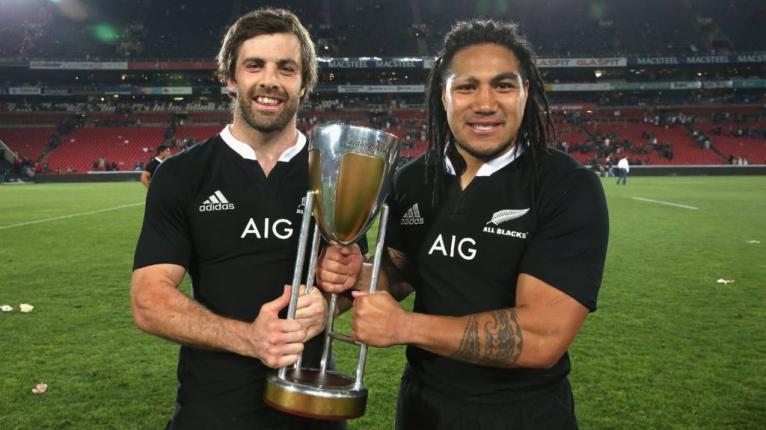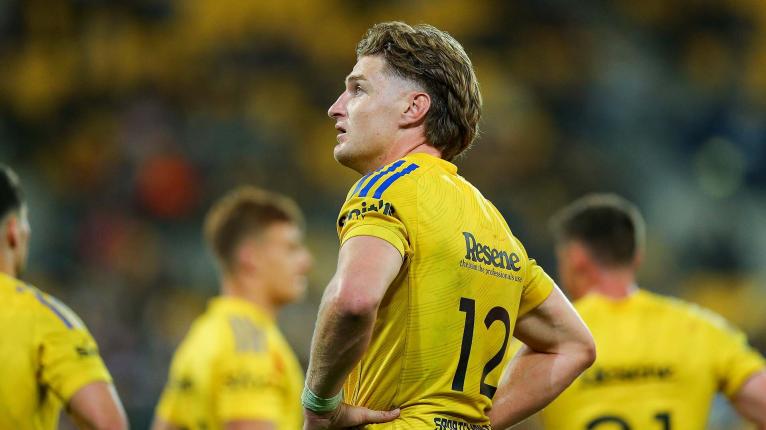A hallmark of every great All Blacks team of the post-war era has been an outstanding pair of midfield backs.
The undefeated Fred Allen-coached All Blacks of the mid-to-late-60s had Ian McRae and Bill Davis, a formidable Hawke’s Bay duo melding the power of McRae and the speed and guile of Davis.
In the late 70s, Bill Osbourne and Bruce Robertson formed a highly skilled partnership, a major contributor to the 1978 Grand Slam. Members of the World Cup-winning 1987 team unanimously point to the Warwick Taylor-Joe Stanley combo as a key factor in their success, while Walter Little and Frank Bunce took their North Harbour pairing onto the global stage and into a great rivalry with the fantastic Australian duo of Tim Horan and Jason Little.
And of course, there was Ma’a Nonu and Conrad Smith, again a mix of power and smarts. It took time for Graham Henry to settle on the Wellington double act, but they played over 50 tests together with a win rate of over 90 per cent.

That’s a hellishly hard act to follow, and it’s fair to say it’s a problem Ian Foster really hasn’t been able to find a definitive answer to. A combination of injuries and form have threatened to muddy the waters even further ahead of the Ireland series in July.
Since taking over as head coach, Foster has started seven different combinations in 21 tests, his most frequently used pairing being Anton Lienert Brown and Jack Goodhue.
Goodhue hasn’t played a first-class game since April of 2021, when he blew his knee out at Sky Stadium, but is not far off returning to the Crusaders, and both Foster and Scott Robertson will be hoping he can get back to form quickly and stay healthy.
The question is where they will play the powerful Northlander. For both the Crusaders and All Blacks he’s been used a lot in the No 12 jersey, and whilst effective in that role, there is a belief that he would be better able to showcase his strengths with 13 on his back.
Havili deserves great respect for the way he has put team first and moved to a position he never really fancied.
Foster won’t have the other member of his preferred duo to call on, with the uber-reliable Lienert Brown likely out until at least October, making him touch and go for the end of year tour.
So Foster will have to look for another combination for the Ireland tests and the Rugby Championship.
Last year the most utilised duos both featured David Havili in the inside position, either with Rieko Ioane or Lienert Brown outside him.
Havili deserves great respect for the way he has put team first and moved to a position he never really fancied. He’s done a great job for the Crusaders but copped some unfair criticism last year when he was being used by the All Blacks in a way not really suited to his skill set.

Quinn Tupaea also had a run and showed tremendous potential, but has so far not really stood out this year. His strong point had been his powerful, direct running, but in 2022 his gainline stats (54 per cent) are inferior to, for example, the Umaga-Jensen brothers (Thomas, 66 per cent, Peter 71 per cent) and his defence has been a worry. 20 missed tackles is too many. He remains work in progress.
There are those who still believe that wing is where Rieko Ioane is most likely to shine in test rugby, and I’ll confess to having been one of those, but that’s a perception that is changing with his performances at centre for the Blues.
His searing pace off the mark makes him a real threat on attack and his distribution is improving, but where he is really making in-roads is in defence. His tackle success rate is good enough at just under 90 per cent but he is becoming a more effective tackler and his brilliant ball-and-all strike on Dom Gardiner in the Crusaders game was the sort of thing that can save a test match.
The return to form of Caleb Clarke as a left wing makes the call to run Ioane in the midfield a lot easier.
Ian Foster made it clear he regarded Barrett as a fullback, a veiled signal that he had planned on using him in that role regardless of what unfolds in Wellington, with the extraordinary Will Jordan doing his thing from the wing.
We now await the return of Roger Tuivasa-Sheck to the Blues starting XV and the enormous possibilities of a combination with Ioane. You can but wonder what might have developed had Tuivasa-Sheck not been injured in just his second appearance this season. Yes, there was a costly tackle miss on Bailyn Sullivan in the Hurricanes defeat, which was predictably feasted on by the social media gannets, but everything else he did smacked of potential.
We all know his class, and there is every chance he will be in the All Blacks squad with a view to the future, but it will be much easier to sell if he can build on his promising start. Presumably the Blues will give him a bit more ball moving forward than they did in Christchurch when he was used once in the last 15 minutes.
The other joker in the pack is Jordie Barrett.
Ian Foster made it clear he regarded Barrett as a fullback, a veiled signal that he had planned on using him in that role regardless of what unfolds in Wellington, with the extraordinary Will Jordan doing his thing from the wing.

But Barrett’s move to the inside centre role for the Hurricanes has been an eye-catcher.
He is a very big man, almost with a loose forward build, but obviously possesses the skill set of a back. Against the Crusaders he was impressive, with only Julian Savea making more ground, whilst getting away three offloads. He appeared to be better contained by the Highlanders but still averaged ten metres per carry and didn’t miss a tackle.
Playing players out of position has been a common lightning rod for All Black World Cup failures, so if Barrett is going to switch, it’s best to do it sooner rather than later. In terms of this All Blacks midfield minefield, his is the space most worth watching over the coming weeks.


Foster needs to put his ego to one side and pick Jordie at 12. This is a massive no brainer. you need a big12 in the modern game. Allows Jordan at 15 and Caleb on the wing. Then we are starting to have some threat
Johnson makes a nice point "[Havili] copped some unfair criticism last year when he was being used by the All Blacks in a way not really suited to his skill set."
Foster kept trying to use Havili as a battering ram. With poor results. But refuses to consider using Jordie Barrett as a battering ram. When Jordie Barrett is built for the that role and likes playing at 12.